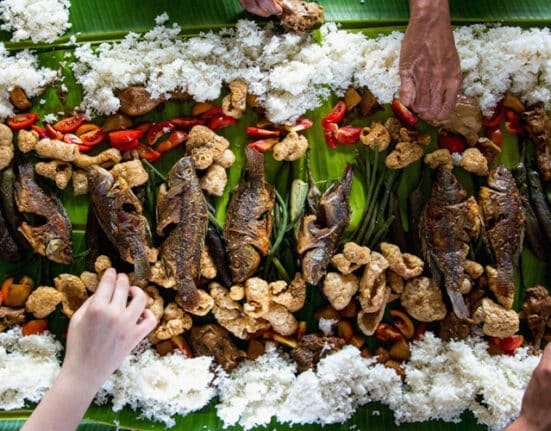THE Philippines’ foodscape is a melting pot of flavors for everyone’s palate. Filipino gastronomy is an interesting field as it is diverse in every region, hailing its own specialties and culinary traditions.
Every Filipino food is a staple on the dining table because it brings families together. With the rich flavors our Filipino cuisine has to offer, let’s have an introspection on how Filipino foods fit our palate, while also reflecting our identity as Filipinos.
The Past of our Flavors
Food is the basic unit of culture of a community because it serves as a living record of the past. The gastronomy of the Philippines is the core of the nation’s history. Our ancestry connects people through food. It’s inherited from a long lineage of influence from indigenous food, trade, and occupation. Filipinos innovate and infuse their own taste, which has become part of their testament of experience and struggles. They know how to improvise and indigenize foreign elements to make them part of our own cuisine and fit the Filipino palate.
Through the course of its unique history, Filipino cuisine was able to sustain its indigenous food. In written documents, the Natives savored a salty and acidic taste. Thus, Spanish writers and explorers have consistently written about our food as salty and sour. These two flavors have expanded in creating well-known dishes up to this day.
Taste that Lasts: The Art of Filipino Food Preservation
During the early times, it was important to preserve food so people could consume it longer. Thus, vinegar is one of the key ingredients Filipinos use in every dish. Kinilaw, which is any fish or meat soaked in vinegar before eating it raw, is one of the versatile Filipino foods. Paksiw is also a native food that can last for days. And Sinigang, a tangy broth, was just the beginning of Filipino flavorful broths throughout the archipelago. These foods are rooted in the freshness, proximity, and availability of the ingredients.
Sour cooking is a convenient way because it can be preserved without any refrigeration. It also shows that these original dishes retained their ingredients and cooking methods even to this day. The souring ingredients in the Philippine landscape are flexible and adjustable according to budget and circumstance. Whether using tamarind, guava, or kamyas, these comforting flavors elevate the culinary experience, making every meal feel like a celebration of our heritage.
Another way Filipino ancestors preserved food was through salt, giving rise to Buro, a Filipino food considered an acquired taste for many. This food dates back to precolonial times, featuring a meat or fish with much salt, similar to bagoong. Both are partnered with rice or other dishes, and they bring a bold and unique flavor to the food, which adds a distinct identity to our very own cuisine. Salting was vital because it preserves food for longer periods, even before the advent of modern refrigeration.
Filipino Cuisine: Speaks the Filipinos’ Grit
What makes Filipino dishes unique and special is that they reflect the Filipino values and identity. The relationship between food and Filipinos indicates the intimate connection with their nature and region. Filipino people adapt to various situations and manner of cooking in ways that depend on what is available with the resources. They exemplify flexibility in accommodating existing conditions (e.g., using calamansi for Sinigang if there are no other available souring ingredients).
Filipino cuisine is also a way of communication. It tells the stories of the perseverance and resourcefulness of the people. They deeply honor the value of pakikisama. Like the balance of flavor and umami from our popular dishes, Filipinos reflect the harmony and spirit of solidarity. Filipinos don’t just make food, they make it OUR food, ready to share with others because they value generosity. The appreciation for togetherness makes every meal special because it fosters unity within the community.
The rich tapestry of Filipino dishes not only tantalizes the taste buds but also shares the profound expression of Filipino identity. Food is a culture that encapsulates the historical influences that shaped the array of food that we have now. The flavors of Filipino dishes interconnect the past and the present, embracing connections and conserving traditions. Thus, food is culture, and culture is food. And this heritage will forge a deeper bond for generations to come.
With reports from Eunice De La Cruz
How useful was this post?
Click on a star to rate it!
Average rating 0 / 5. Vote count: 0
No votes so far! Be the first to rate this post.
We are sorry that this post was not useful for you!
Let us improve this post!
Tell us how we can improve this post?





